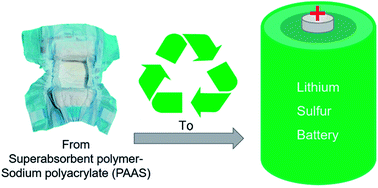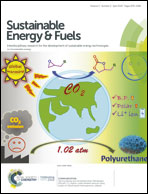Sodium polyacrylate-derived porous carbon nanosheets for high-performance lithium–sulfur batteries†
Abstract
Here we report a green and sustainable approach to transform sodium polyacrylate into hierarchically porous carbon nanosheet (HPCNS) structured lithium–sulfur battery cathodes. With an appropriate sulfur (S) loading and reduced graphene oxide (RGO) modification, the HPCNS/S@RGO hybrid yields a reversible capacity of 1262 mA h g−1 at 0.5C for the first cycle and retains 690 mA h g−1 over 200 cycles.



 Please wait while we load your content...
Please wait while we load your content...